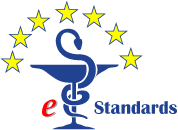Use Case Repository
When an Irish citizen goes abroad within the EU or to another location within Ireland, and requires medical attention, they seek medical attention and try to describe their symptoms, diagnoses, and medications to the HP in country of treatment. They have no paper or digital means to show the HP and rely on HP ability to understand patient and get their relevant health data. In many cases, patients, under duress, cannot remember their full medical history, medication lists etc.
An Irish citizen can also have “Planned Medical Treatment” (scheduled care) either Nationally or Cross Border. On arrival to the selected HP, they have a large paper file (in English) with personal health data. As stated before, they have no means to show the HP and rely on HP ability to understand patient and material in file.
|
Patients (or their representatives) |
|
|
Healthcare providers |
Assess and provide appropriate healthcare including prescriptions if required |
|
EHR/SCR systems |
Allows access to and provides patient health data in suitable format |
|
Apps and portals |
Mobile Health App or web portal to enable the transfer or sharing of health data |
|
HIDs |
xShare Yellow Button basic functionality |
Maturity |
|||
|
Download |
One-time share |
Linked options |
Start TRL |
End TRL |
|
|
Patient summary |
X |
|
|
2 |
4 |
|
Electronic prescription |
|
|
|
|
|
|
Electronic dispensation |
|
|
|
|
|
|
Medical image |
|
|
|
|
|
|
Laboratory results |
|
|
|
|
|
|
Discharge report |
|
|
|
|
|
|
Telemonitoring |
|
|
|
|
|
|
Care plan |
|
|
|
|
|
Scenario 1:
Scenario 2:
Scenario 3:
N/A




This website is partially funded by the European Commission under the Horizon 2020 programme
Website designed by IHE-Europe
